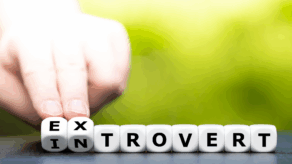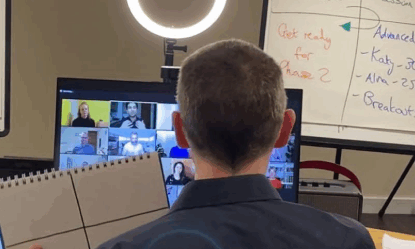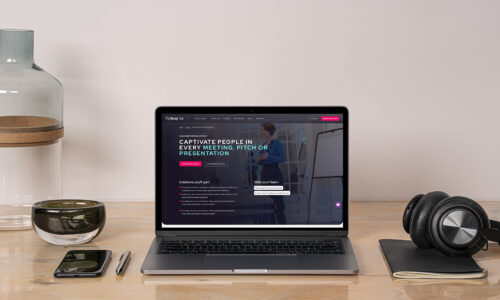Why Is Nobody Listening To Me? 3 Ways To Engage More People

At some point you will have gone into a presentation or meeting, and felt that no one was listening to you.
People were on their phone, looking confused, or outright ignoring you.
It’s hard to continue speaking when it seems that people are switching off, disengaged or rejecting your ideas.
For example, I once taught a workshop to a room full of people who didn’t want to be there. The group was under tremendous time pressure and half of the original group had cancelled because of other deadlines.
I thought to myself, “Okay, I’ve been able to win over tricky audiences in the past. I’m sure I can do this.”
But when I spoke to them in the same style I’d used successfully with other groups of people, I realized the attendees were sitting back in their chair, arms crossed, giving one another sideways glances. I tried harder, convinced that more energy and enthusiasm would bring them in. But the more I tried, the more I seemed to be switching them off.
It wasn’t until I handed over to one of my colleagues that the room started to warm up. He spoke with a very different style and by the time we went to coffee break, they were all on board and enjoying it.
That was when I started to develop an understanding of the spectrum of styles we can use to connect with a range of different people.
It all comes down to shifting between three major styles.
1. ENERGIZE YOUR AUDIENCE BY BEING A MOTIVATOR
The first style is called the “Motivator,” and it’s a shift away from the run-of-the-mill professional persona we often see on stage (all without losing any of the professionalism).
It’s about serving the message.
To energize an audience, you have to speak at a faster pace, putting more energy into your body and your voice, using more intense gestures, a more expressive face. Good examples of motivators you may know are Tony Robbins or Mel Robbins (who are, for the record, unrelated).
They’re both very well-liked, highly booked speakers, and they both really enthuse audiences with a fast, choppy style that is designed to inspire and uplift.
Many speakers use this, and it’s my preferred style too, tending to drop into the Motivator most often. But I’ve noticed sometimes it just doesn’t work with an audience, so I have to shift — as all good speakers do.
2. FEELING INSECURE? BE A COMMANDER
Another style you can shift to is the ‘Commander.’
If you are struggling to gain respect from people, maybe because the audience is older or more experienced than you, this style can really help.
It influences upwards, helping you gain a greater sense of gravitas.
First, you slow down the way that you communicate. You should use smoother gestures and pause between sentences. Use a lower pitch when you speak, and gesture with your palms to the floor.
People associate this style with experience and wisdom — like Barack Obama. When he was president, he had a very commander-like style with a slow and measured delivery. Or look at Oprah’s Golden Globes speech, which prompted a lot of people to say she should run for president.
3. AS AN ENTERTAINER, YOU CAN ALWAYS LIGHTEN THE MOOD
Sometimes we want to lighten the mood, but telling jokes may not be appropriate with the current audience and topic.
It’s possible to create a lighter tone before a meeting starts by using the “Entertainer” style. You can tell stories to connect with people or to illustrate more serious information.
Think of Amy Poehler or Michael McIntyre, who both speak with a higher pitch, faster pace, and floppy movements. They have this general jester-like quality in the way that they move, which allows them to say something that if anybody else said it wouldn’t seem that funny.
The delivery makes the information engaging and interesting.
It’s worth noting that before deciding on a style, especially a lighter one like the Entertainer, you should consider the current mood of your meeting and the interaction you’re having. Then, consider how you want the mood and interaction to end. How do you want people to feel when you’re finished speaking?
You might need to start in a style that better matches where people are in the beginning and then gradually shift toward a style that will facilitate the mood and feelings you want.
Finally, sometimes you need to get them talking and simply stop and listen. To do this you slip back into a facilitation style and encourage them to speak.
Essentially, you should focus your style on serving others.
Don’t just do what feels good for you. Give your audience what they need in order to stay engaged with your message.
Remember: No matter how good your style is, at some point, people will still disengage from you. It’s really important to allow room for creating new and different styles that you can move between as needed.
That way you’ll always be heard.
To learn more about how we can help you please contact our team.


















